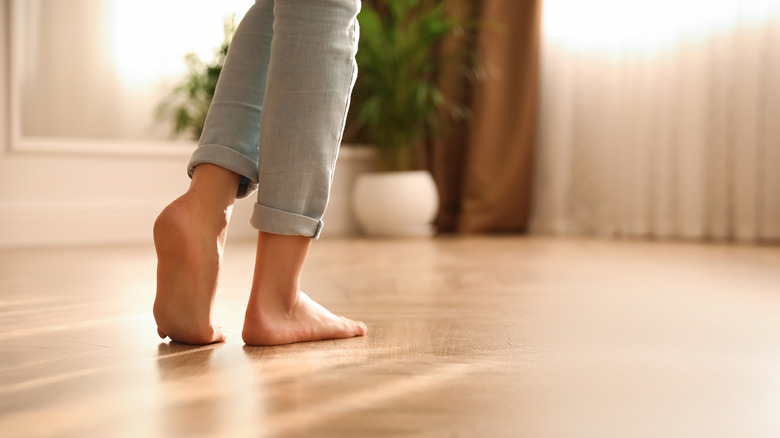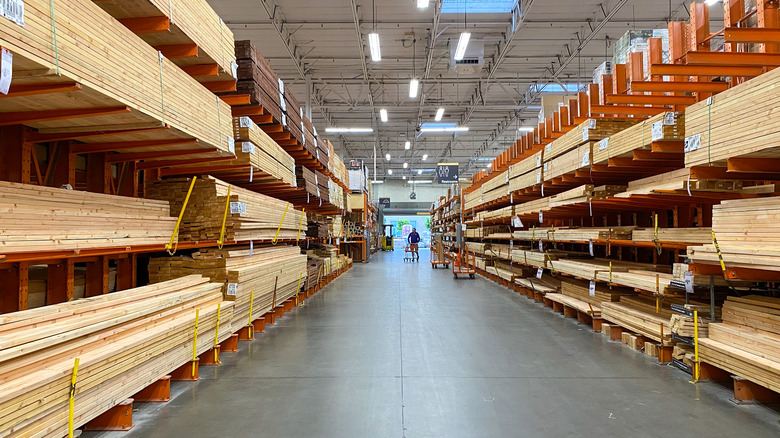What You Need To Buy From Home Depot To Fix Squeaky Floors
We may receive a commission on purchases made from links.
Squeaky floors can be a major inconvenience in your home. Not only are they annoying, but Bekins claims they can also cost you a sale if you're looking to sell your house in the near future. When determining what it really means when your floors squeak, your mind may jump to the conclusion of structural damage or the need to replace all of the flooring. Realtor.com, however, calmly informs that discovering a squeak or creak while walking through your home is nothing to worry about.
Realtor.com further explains that, more often than not, the root cause of noisy floors throughout your home is movement between the hardwood surface and the plywood subfloor underneath, which is usually caused by a gap between your subfloor and the joists that give it structure. As these two materials move and rub against each other, the noise emerges. Therefore, all you need to do to quiet your creaky house, is stop the movement and friction between these two layers.
Luckily, this is not a difficult task and can be easily completed after a quick stop at Home Depot. Let's take a look at a few of the things you will need to purchase.
Items you need to fix your squeaky floors
According to Home Depot, the necessary items for fixing your squeaky floors depends on the access you have to the base structure of your house. If you have an unfinished basement or open crawl space, you have direct access to the problematic pieces lying below. When this is the case, Home Depot advises you to purchase a construction adhesive, like this heavy duty glue by Gorilla, and a shim to directly fill the gap between your subfloor and the joist. Depending on the extent of the gap, you can also purchase a piece of plywood and a few screws to act as a brace between multiple problematic joists.
If you don't have access to the base structure of your house, you will need to use screws and nails to secure the layers and cease the movement from above. Drill shallow pilot holes into the flooring before driving the screws through the floor and into the subfloor. Purchasing a wood filler, like Bondo, that matches your hardwood surface is advised. This way you'll be able to fill holes and cover the screws and nails you've inserted. If the noise is occurring under a carpet that cannot be moved, a stud finder will also prove useful for locating the joists beneath it.

